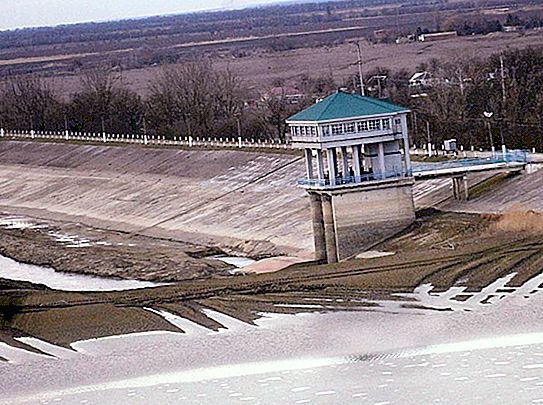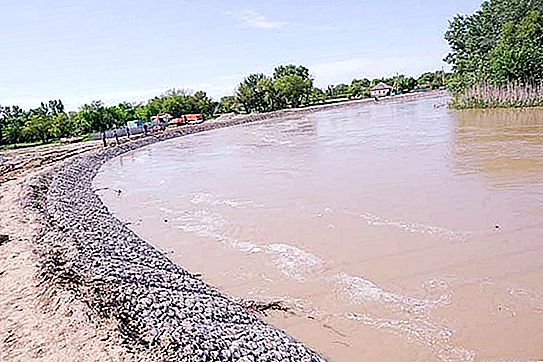In 1965, the Otkaznensky reservoir was built in the Stavropol Territory to regulate the flow of the Kuma River. To date, its life has long expired, most of the reservoir is silty. After the spring flood of 2017 and the threat of a dam breaking, reconstruction of the reservoir began. Currently, repair work has not yet been completed.
History and Characteristics
Design and construction of the Otkaznensky reservoir in the Stavropol Territory lasted from 1961 to 1965. It was erected under the management of the company "Stavropolstroy" under the project "Sevkavgiprovodkhoz." On May 5, 1965, builders blocked the channel of the Kuma River with a 4.7-kilometer-long dam and a height of 27 meters. And then the partial filling of the reservoir with water began. By September 1966, the water level in the Otkaznensky reservoir reached its normal retaining horizon.

The design volume of the reservoir amounted to 131 million cubic meters. The flood spillway was designed to pass 120 cubic meters per second. In this case, the maximum retaining horizon would be 176 meters, and the mirror area would be 21.6 square kilometers. Despite the huge supply of water, the Otkaznenskoe reservoir is shallow. On average, its depth during operation was 5.4 meters.
Siltation and water pollution
During the first 35 years of use in the reservoir, 55 million cubic meters of silt sediment was deposited. The siltation rate reached 1.35 million cubic meters per year. In this regard, the area and volume of the water mirror of the Otkaznensky reservoir significantly decreased. In 2008, the water area was 11.4 square kilometers, and in 2014 - 9.2. About 7 square kilometers of them are overgrown with woody-shrubby vegetation and reeds.
The water in the pond has significant mineralization. The content of nitrites, petroleum products, copper, sulfates regularly exceeds permissible concentrations. In the period from 2000 to 2015, the average annual concentration of copper was one to eight times higher than normal, nitrite was one to five times higher, sulfate was three to six times higher, total iron was one and a half times, petroleum products were two and a half times higher. Typically, water in the Otkaznensky reservoir is assessed as “polluted”.
Fishing
Almost all the time of its existence, the reservoir was used for fish farming and fishing. The species composition is determined by the ichthyofauna of Kuma. There are silver crucian carp, zander, common carp, perch, bream, motley and white silver carp, ram, catfish, grass carp. In 1986-2010, the average catch for the year was 155 tons, and in some years reached 350 tons. The first place by weight in the catches was occupied by carp, the second - by crucian carp.
Due to the intense anthropogenic impact and changes in the hydrological regime, fishing in the Otkaznensky reservoir has lost its attractiveness in recent years. Flowering water, overgrowing shallow areas led to the transformation of faunistic complexes, reducing the number and biological diversity of valuable commercial fish species. Now the fishery value of the reservoir is actually lost due to a sharp drop in fish productivity.





